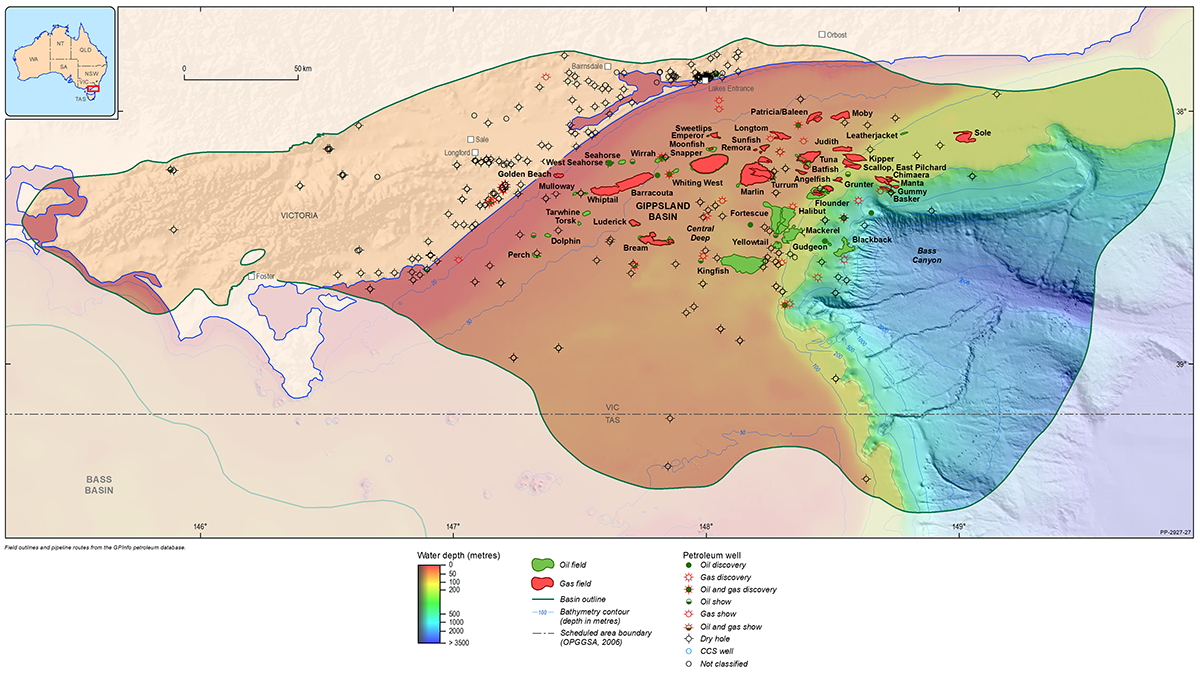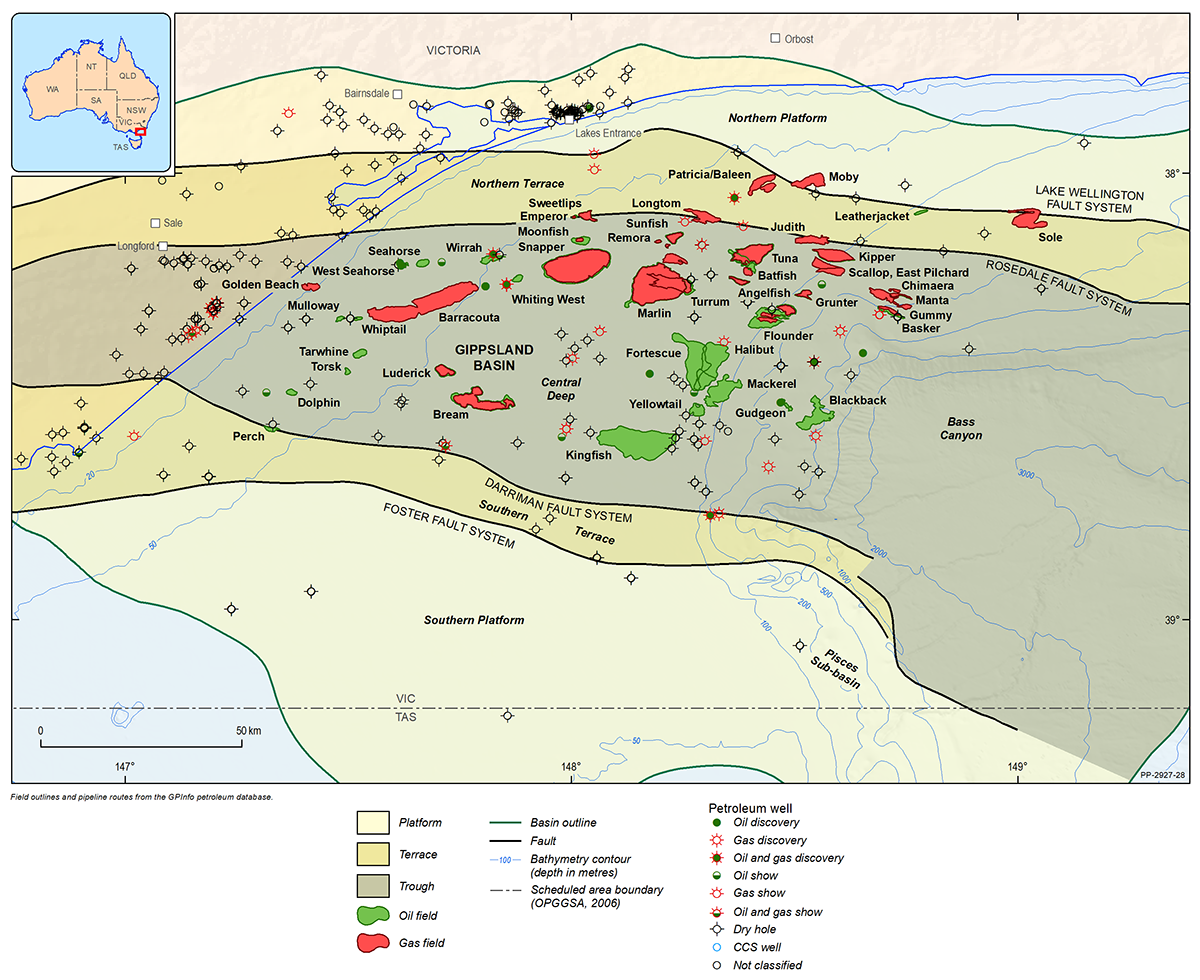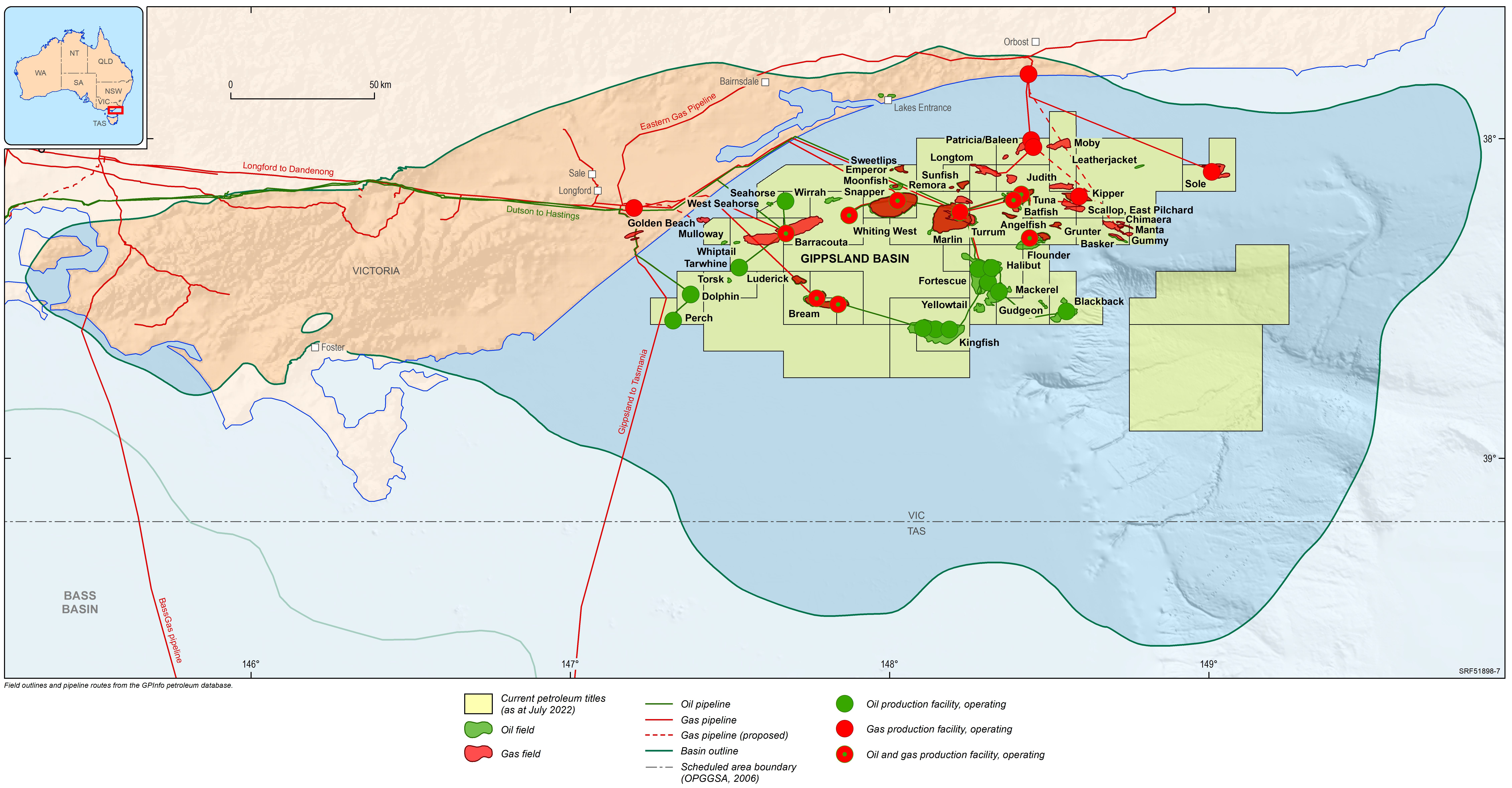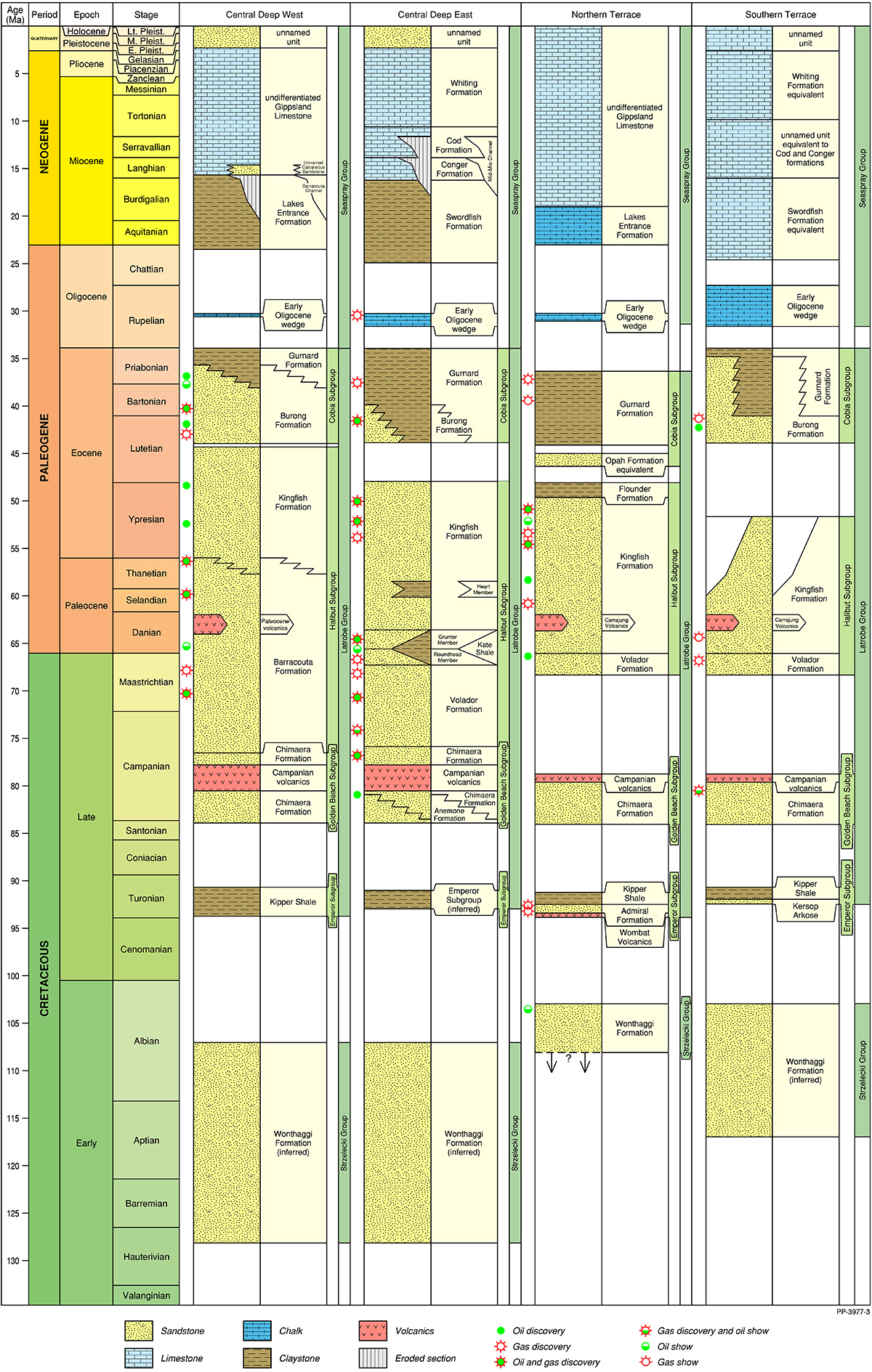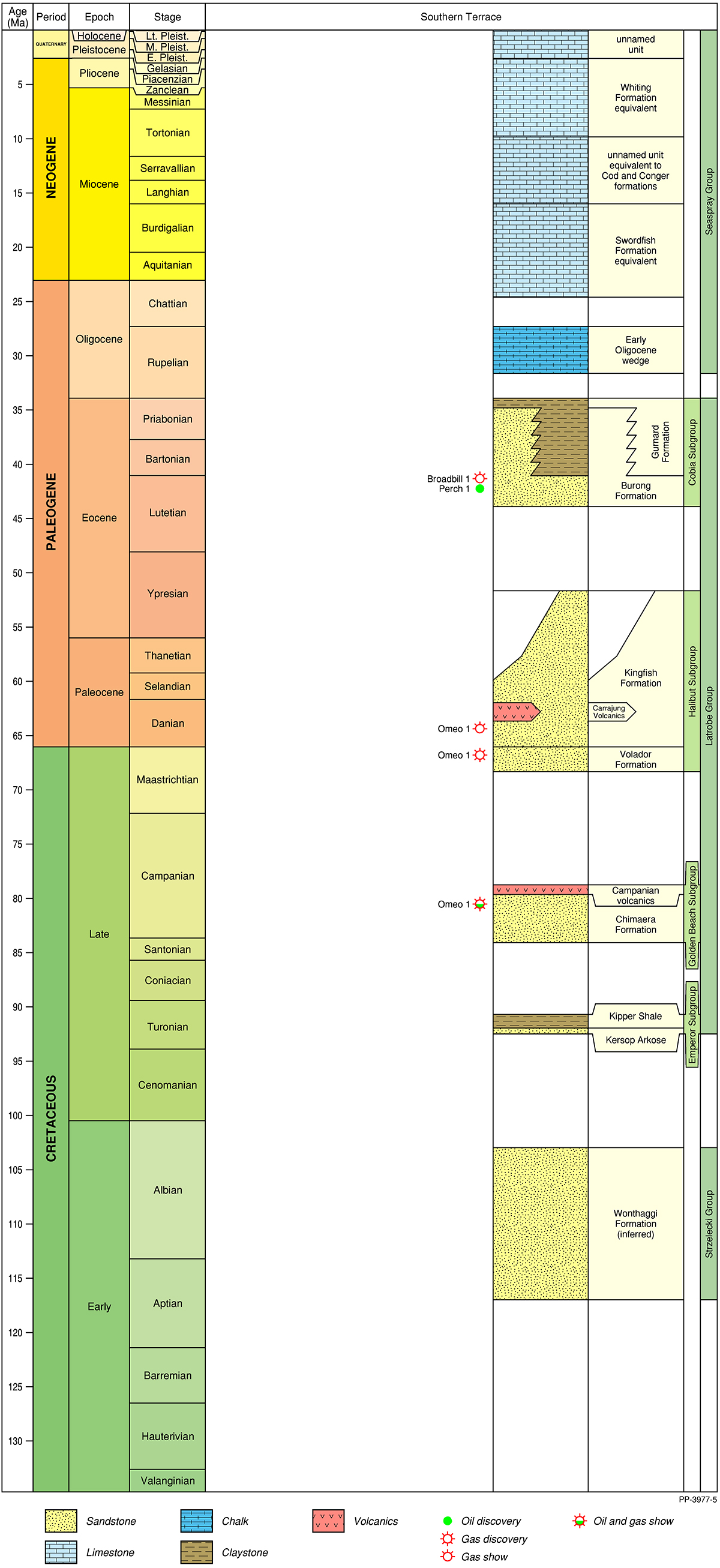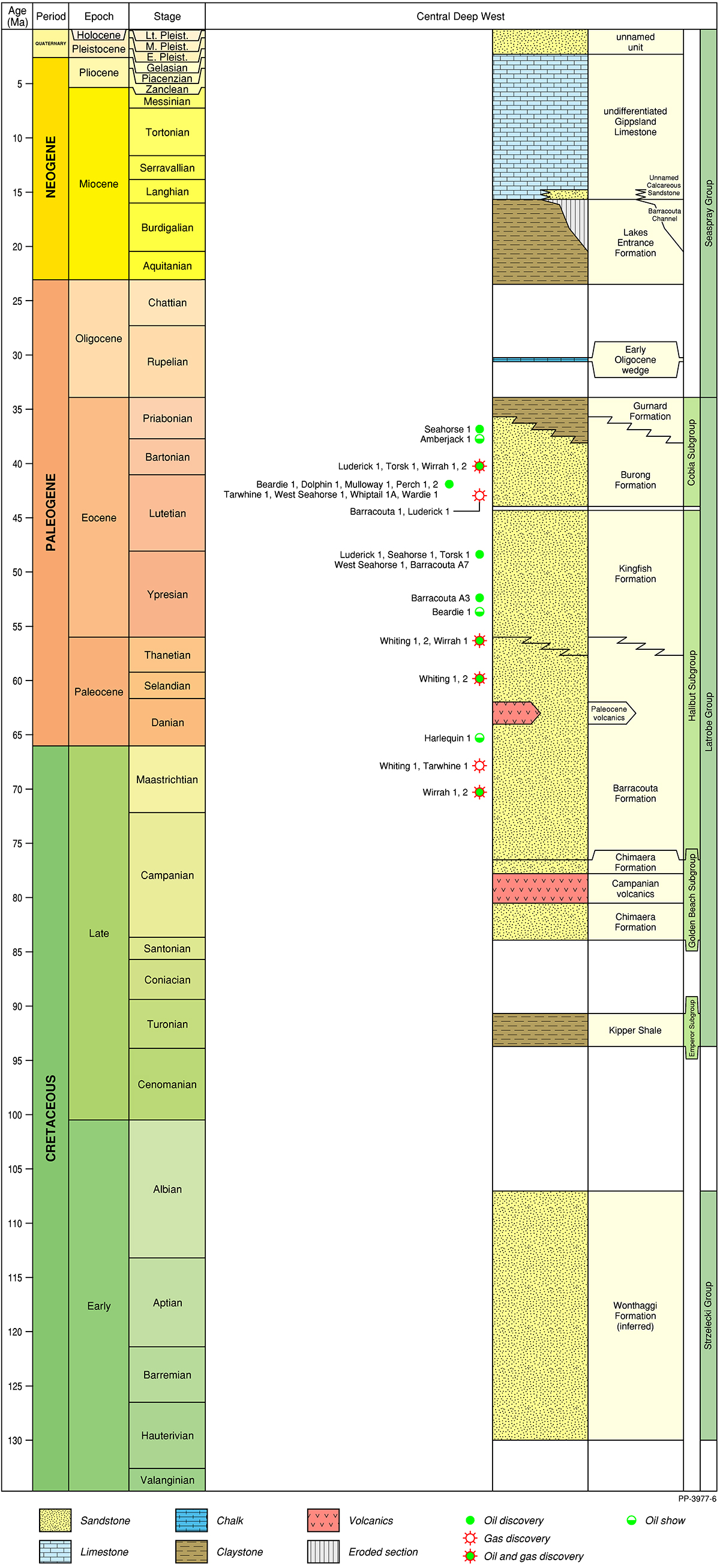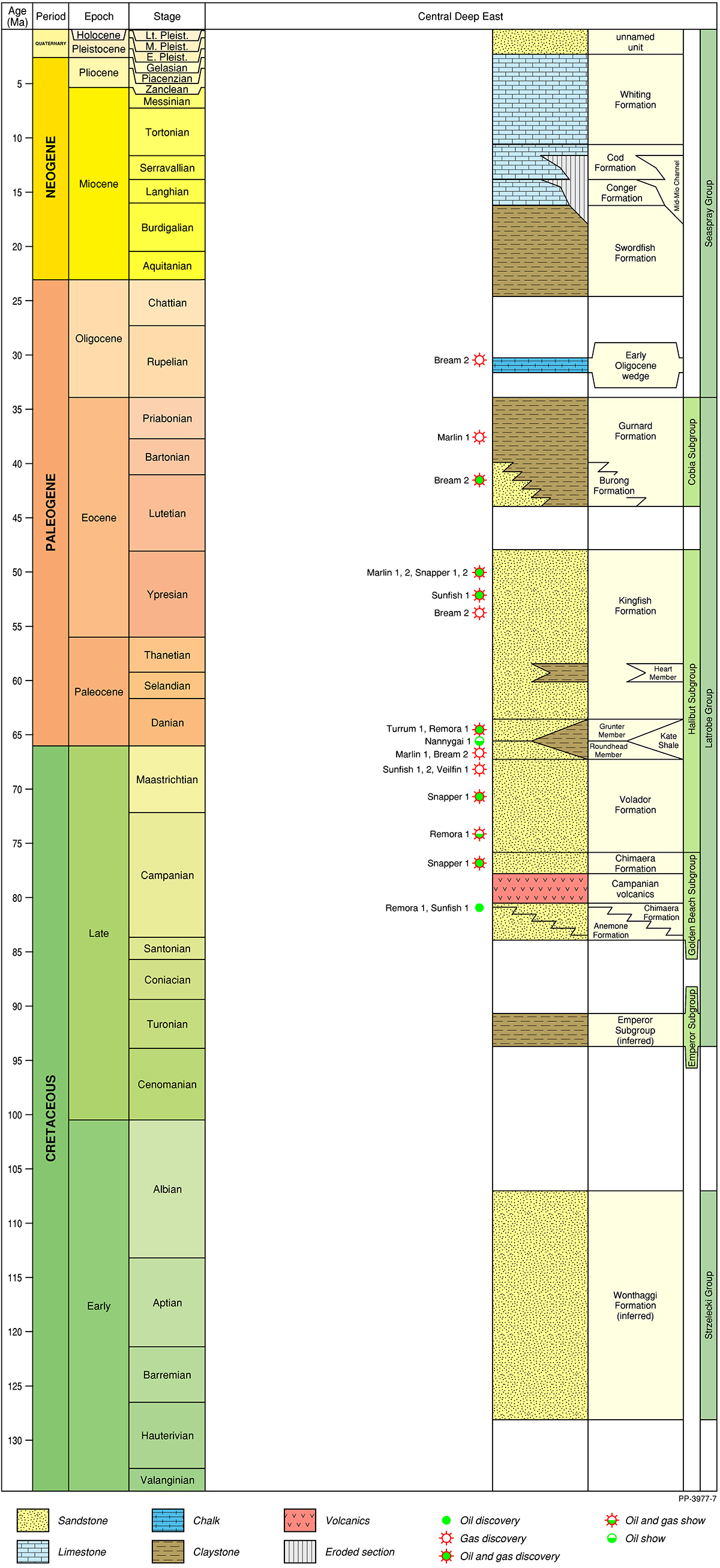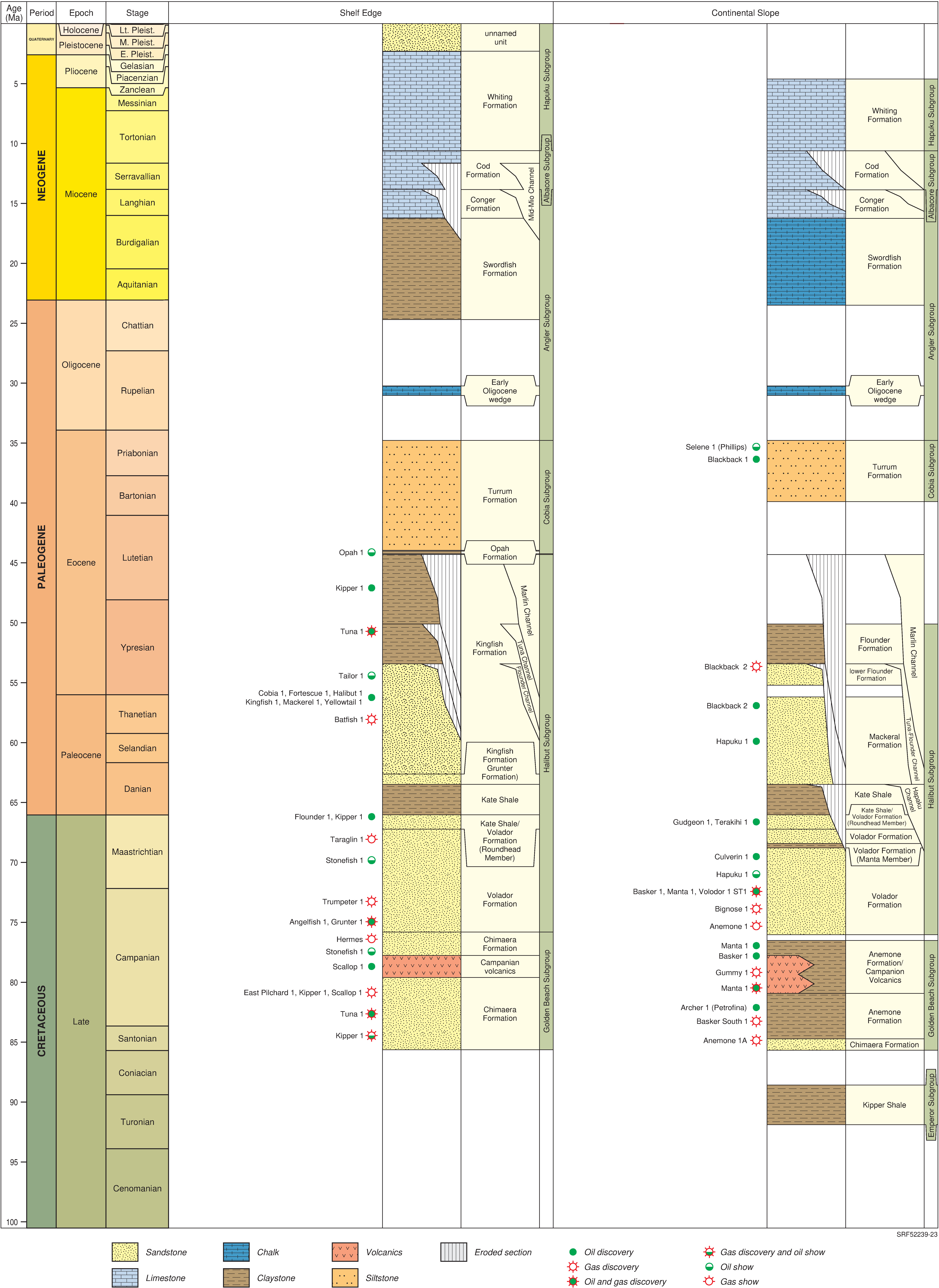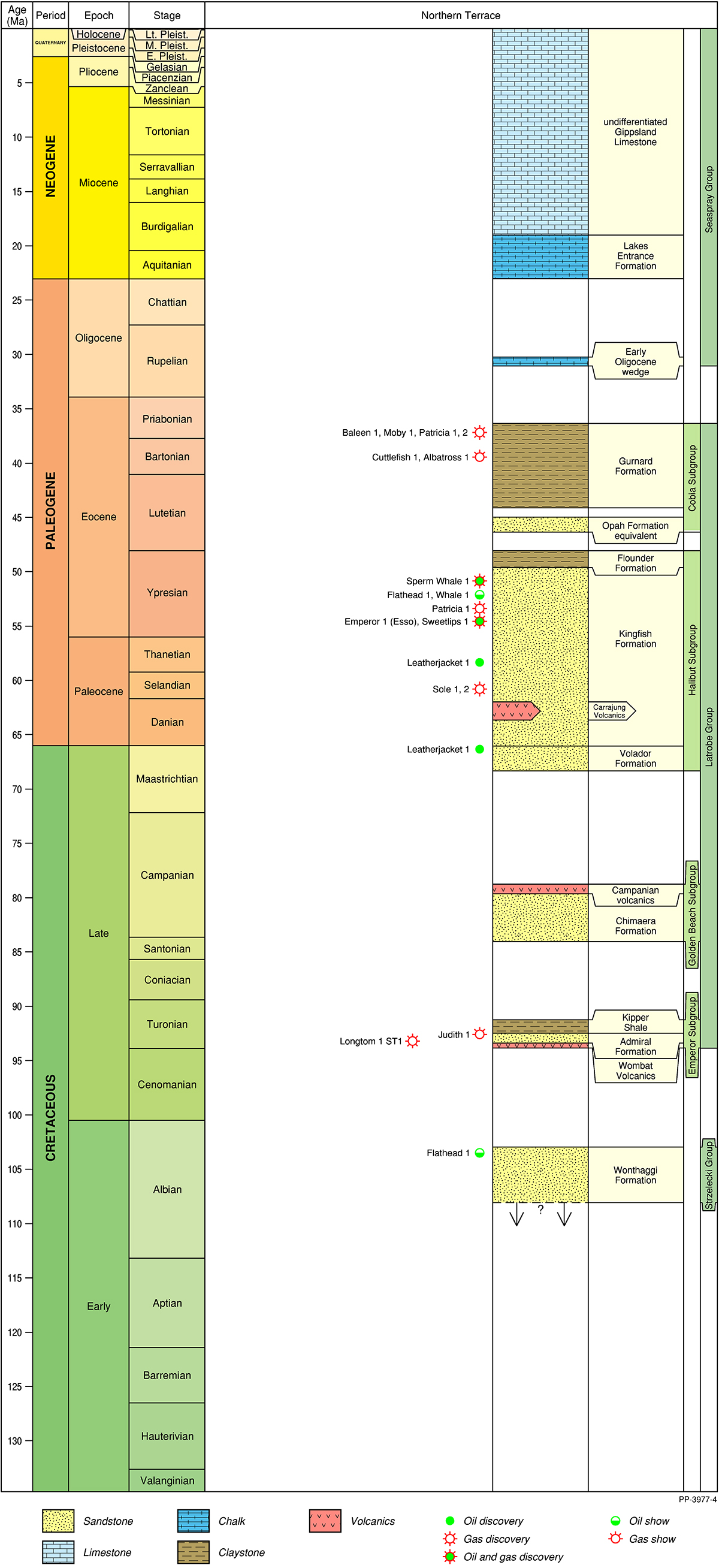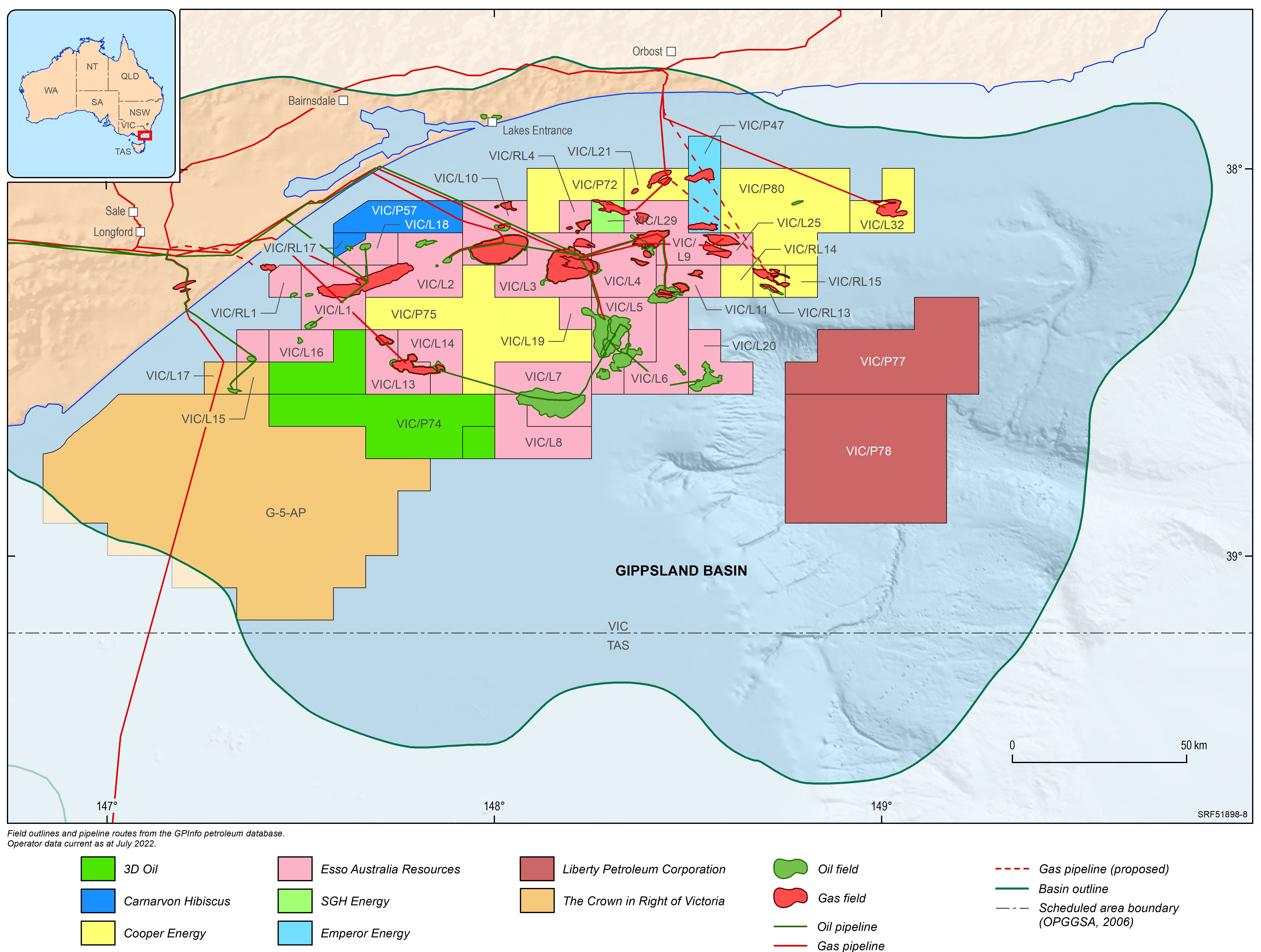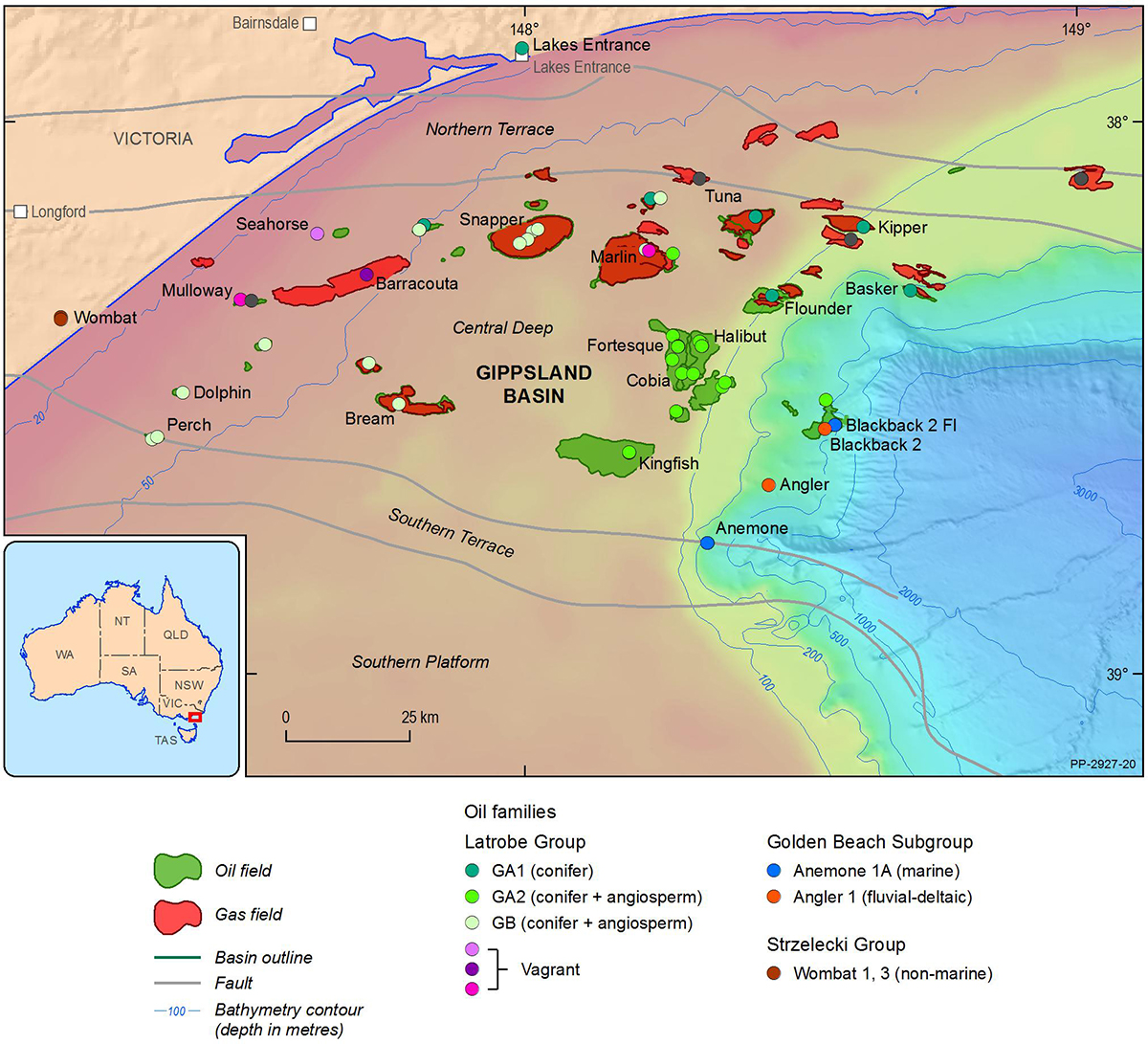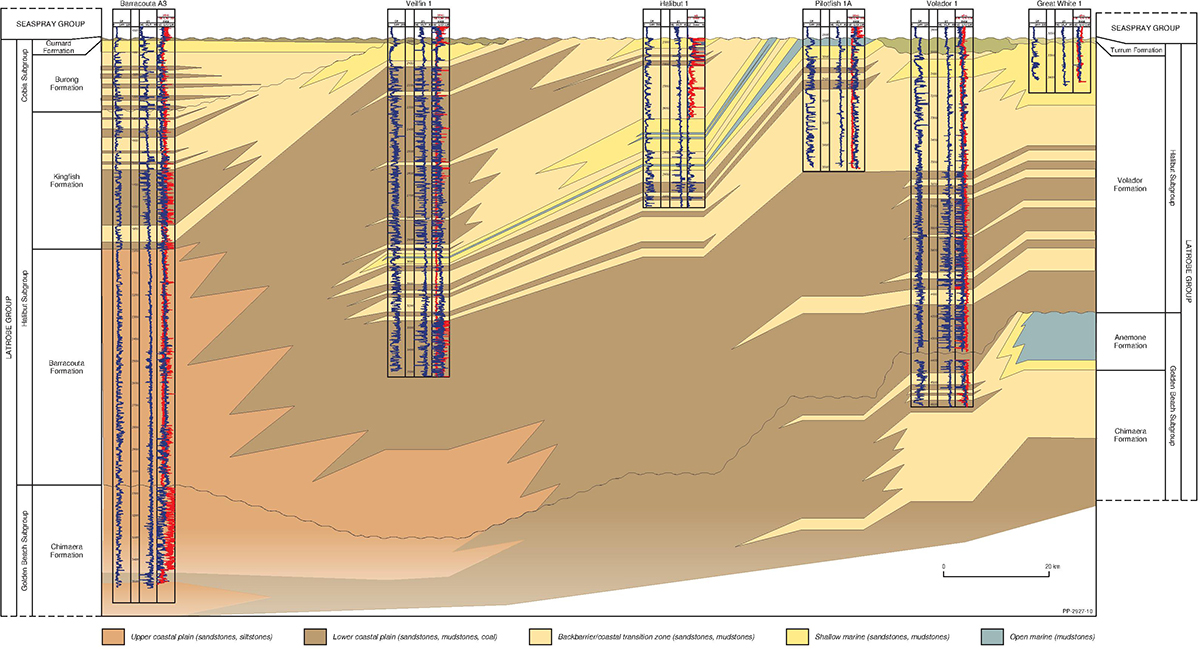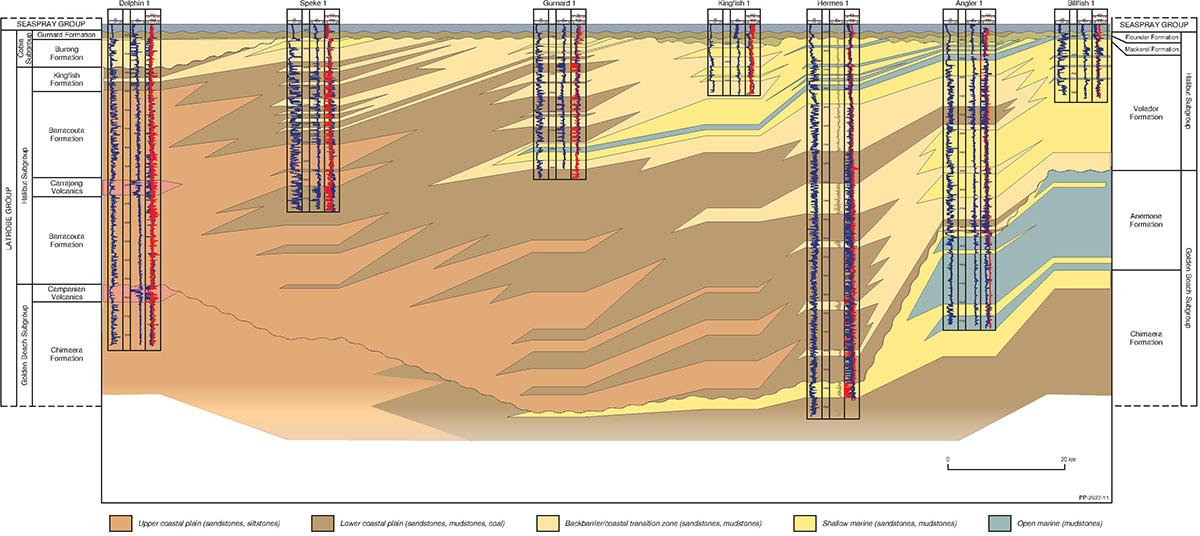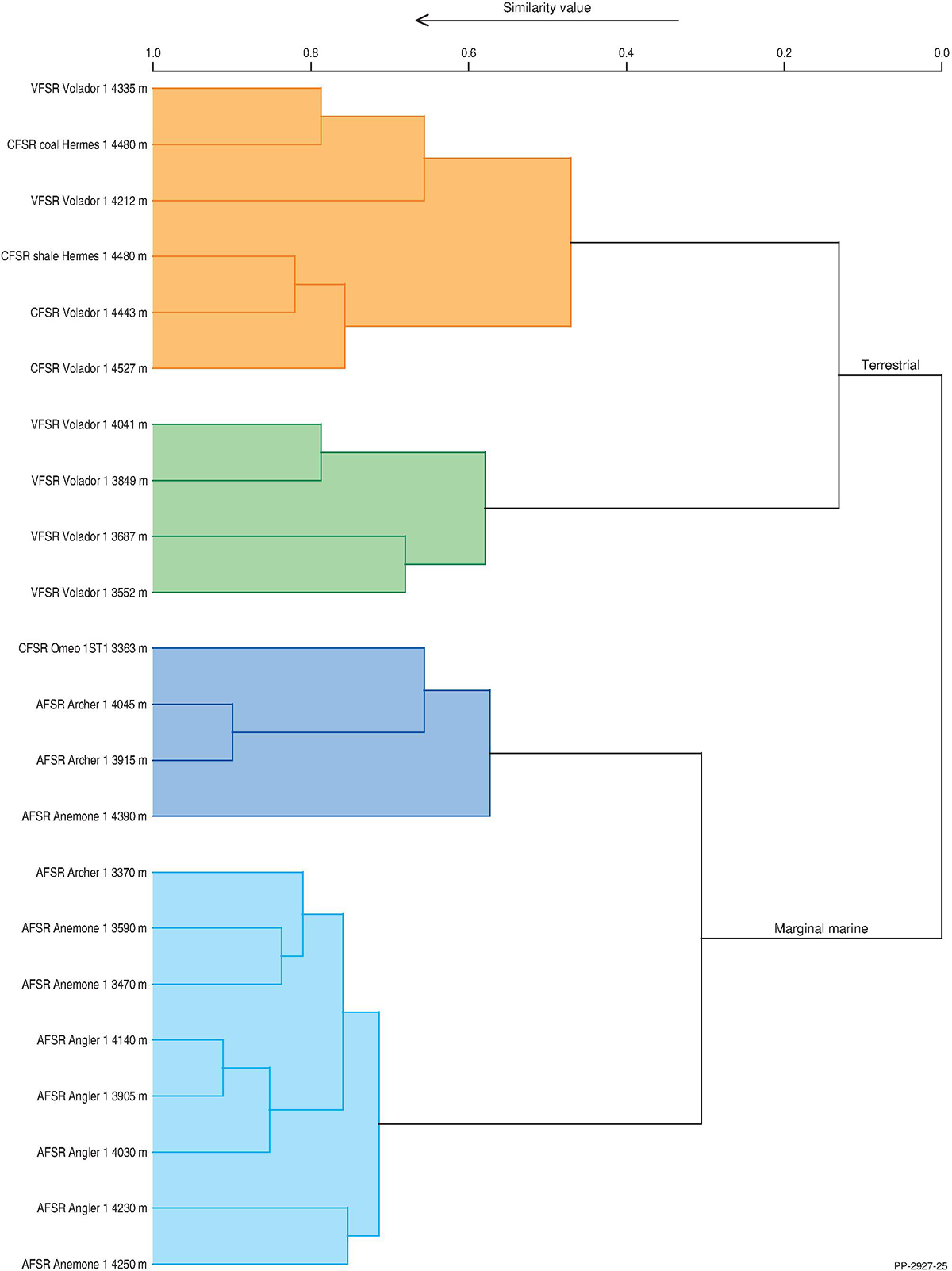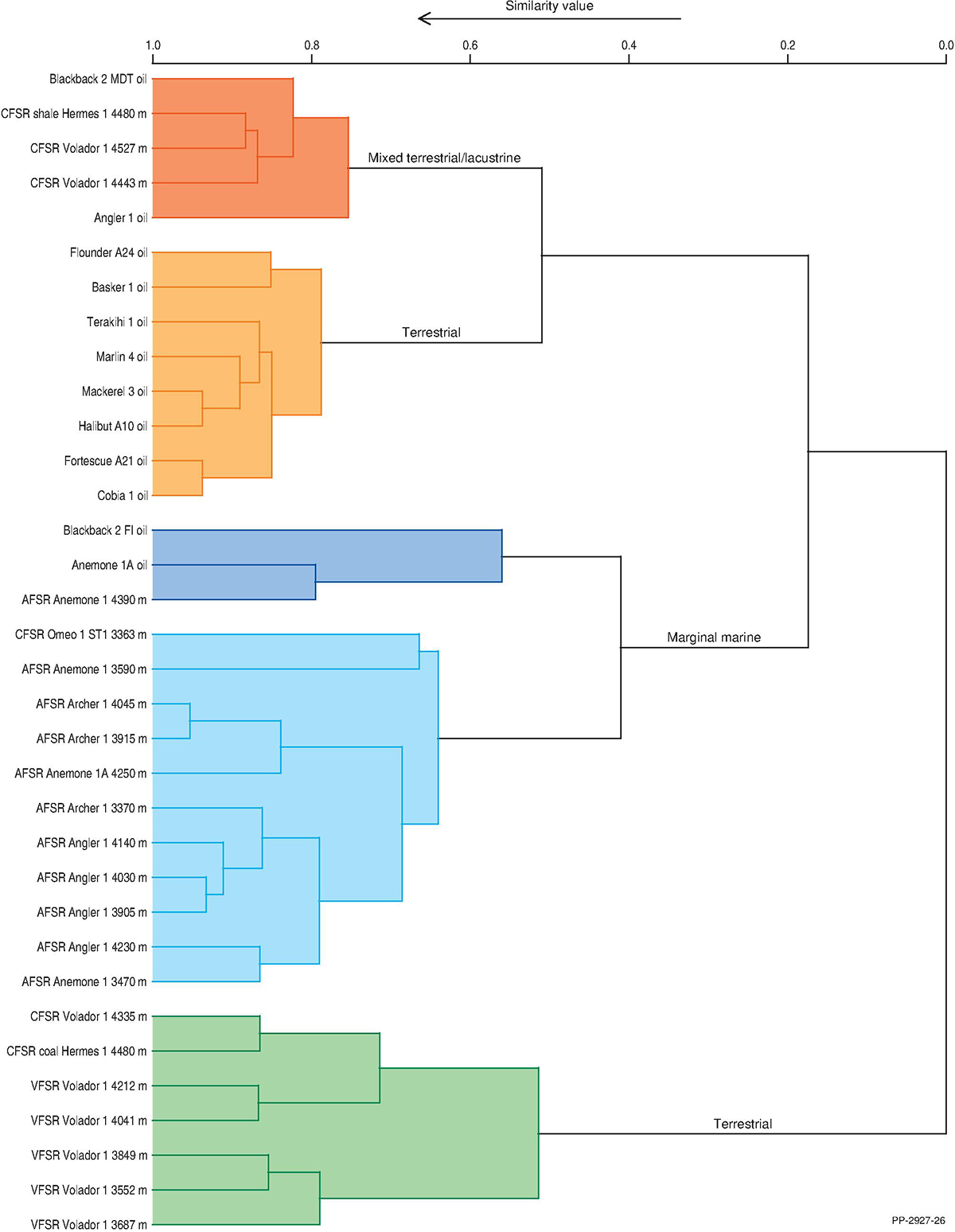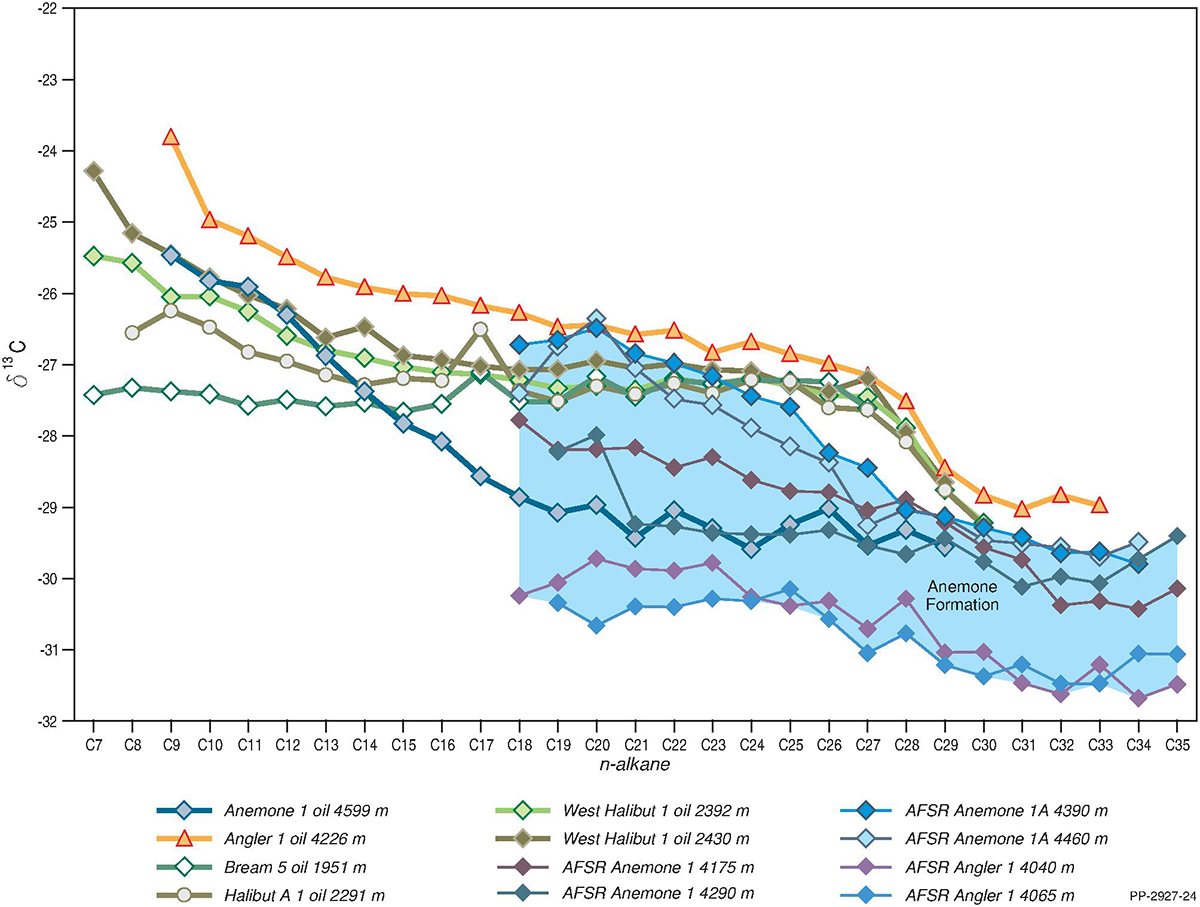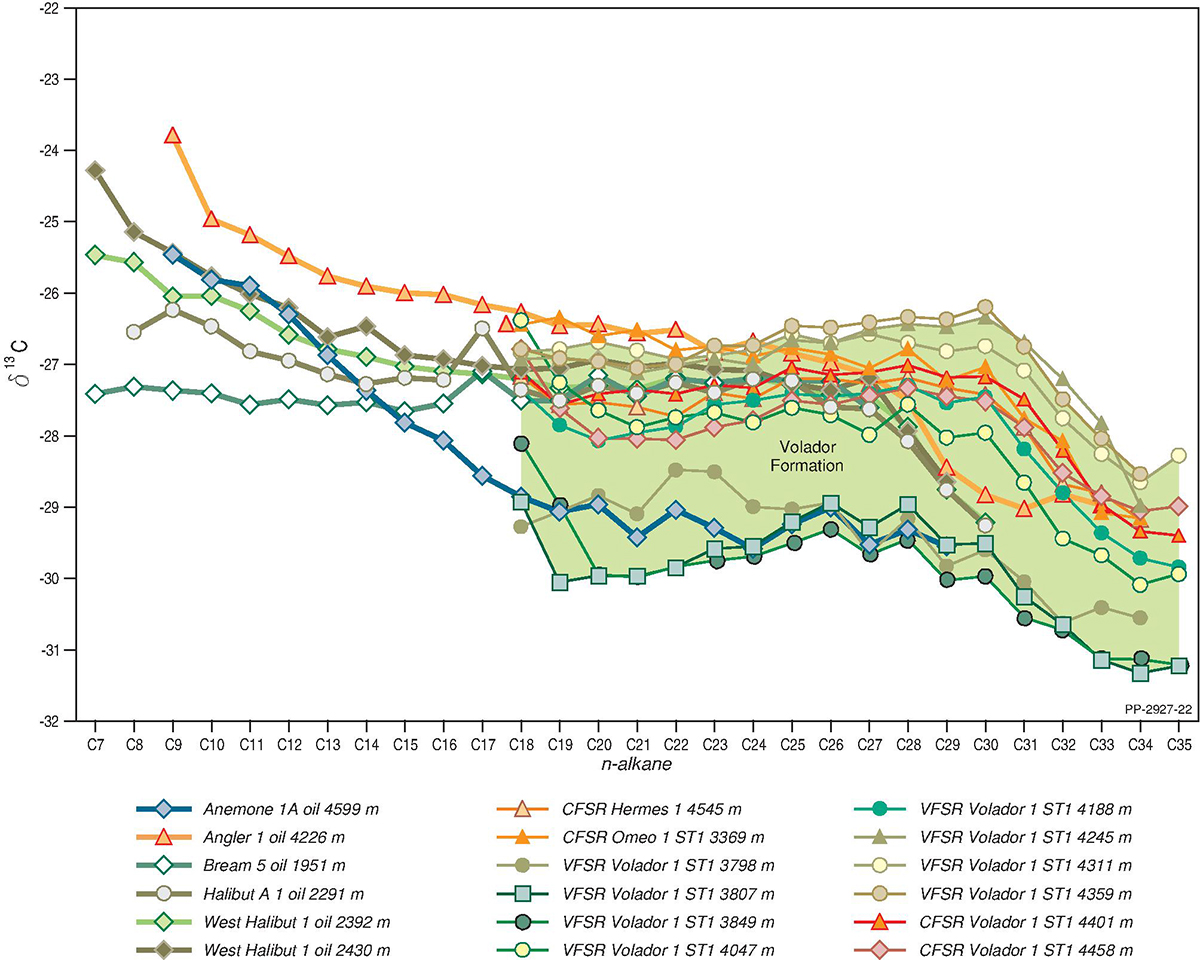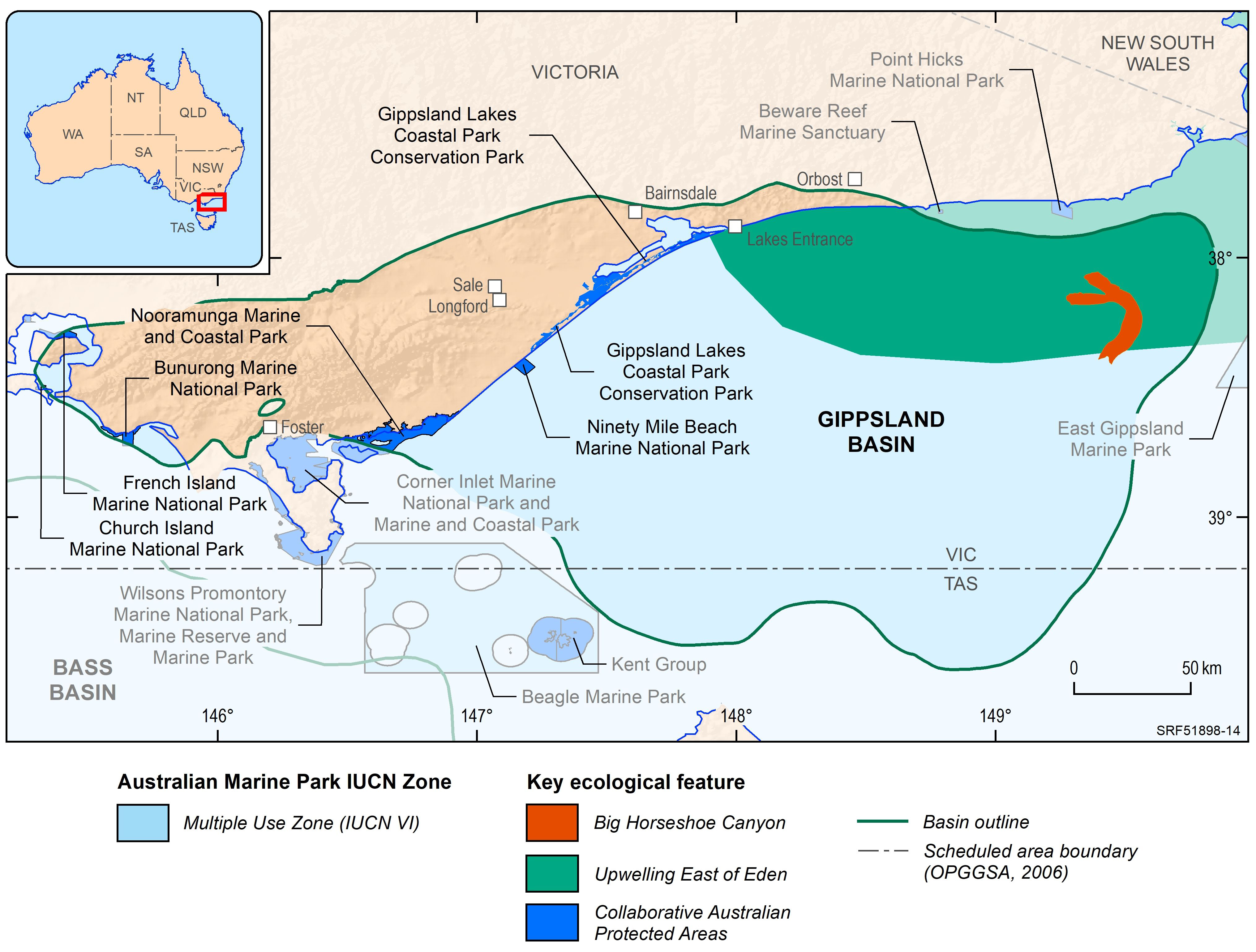Regional Geology of the Gippsland Basin
Page last updated:31 August 2022
The Gippsland Basin in southeastern Australia is located about 200 km east of the city of Melbourne, covering about 46 000 km2, of which two thirds are located offshore (Figure 1). The Gippsland Basin is recognised as one of Australia’s premier hydrocarbon provinces, having continually produced oil and gas since the late 1960s. In May 2022, remaining reserves were estimated at 1.64 Tcf (1844.5 PJ) of natural gas and ethane, and 94 MMbbls (552.7 PJ) of oil and natural gas liquids (EnergyQuest, 2022). Several petroleum systems operate in the basin, with the largest oil and gas fields hosted by top-Latrobe Group (Eocene) shallow marine barrier sandstones, and additional discoveries made in intra-Latrobe Group (Upper Cretaceous–Paleocene) coastal plain and deltaic channel sandstones. Despite its mature status, parts of the basin remain underexplored and offer a variety of untested plays.
For information on the 2022 acreage release areas in the Gippsland Basin visit the Department of Industry, Science and Resources website.
